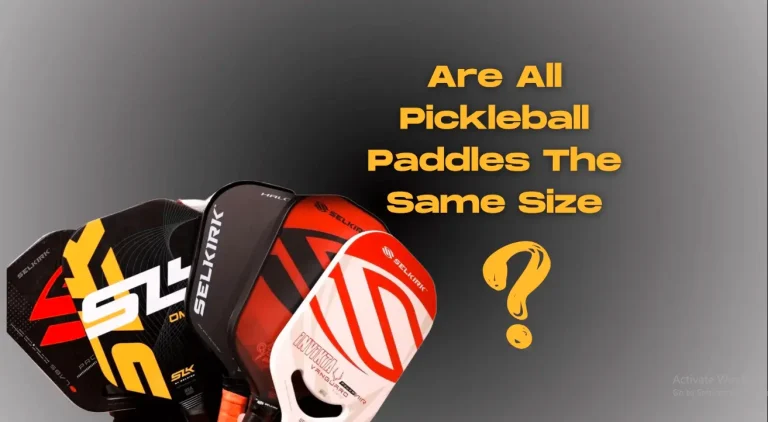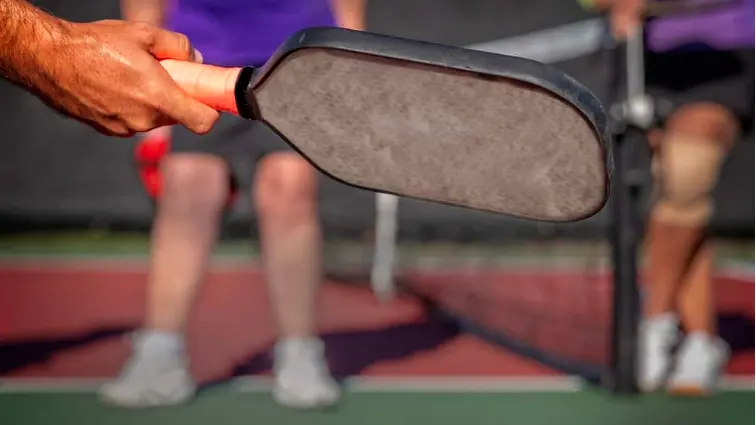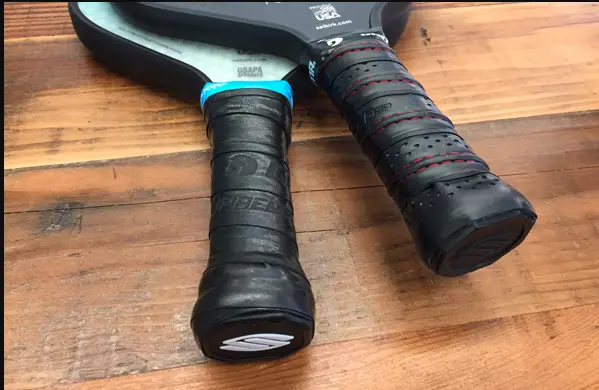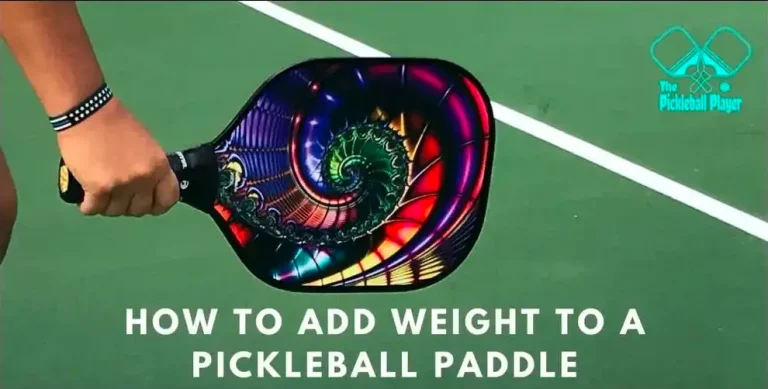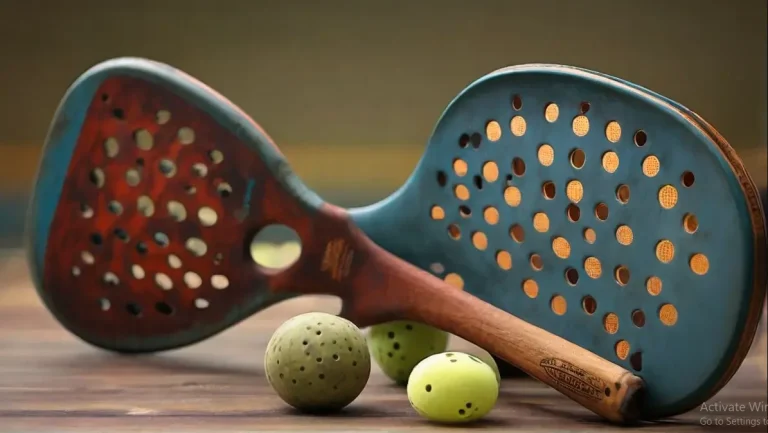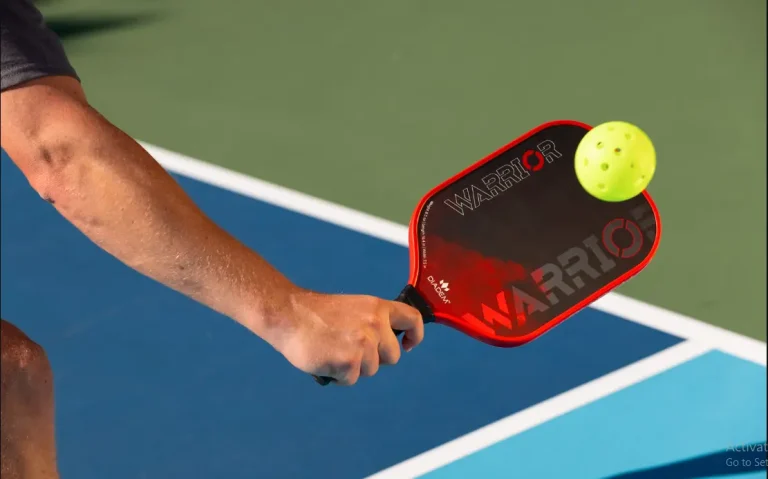Mastering the Pickleball Paddle Grip at the Net
You step up to the net, paddle in hand, eyeing your opponents across from you. The moment of truth has arrived. This is your chance to smash that pickleball past your rivals and score. But only if you’ve got the right grip on your paddle. See, holding it the proper way when you’re at the net is crucial. It gives you control, power, and agility to whip those winning shots. In this article, we’ll break down the ideal pickleball paddle grip for the net. You’ll learn proper hand positioning to crush those angle volleys. We’ll cover how to adjust based on forehand vs backhand, and how to switch up your grip for dinks vs drives. Master these paddle-holding techniques at the net and you’ll have your competitors stumbling.
The Importance of a Proper Pickleball Paddle Grip
At the net in pickleball, how you keep your paddle could make or wreck your game. A good grip gives you control, energy, and finesse—all essential for net play.
As you volley together with your opponent at near range, even little changes in your grip and wrist position can change the speed, spin, and site of your photographs.
Find Your Natural Grip
The most crucial thing is to find a grip that feels comfortable and genuine to you. For most players, an eastern pickleball paddle grip (like shaking hands) or semi-western pickleball paddle grip (turned slightly clockwise) works nicely for net play. Experiment with distinct grips to determine what offers you the first-class sense and manipulation of your paddle. Don’t choke down too far on the handle, or it can feel awkward and restrict your wrist mobility.
Keep a Loose Grip
At the net, you need to react quickly to return fast shots. A tight, rigid grip will only slow you down and reduce your ability to make crisp volleys. Keep your grip firm but relaxed. Your wrist should remain loose and flexible so you can make subtle adjustments to angle your paddle at the last second. Stay light on your feet, and keep your knees bent and paddle up, ready to volley.
Use Your Wrist
While a proper grip provides a solid base, much of your control and finesse at the net comes from using your wrist. Slight wrist turns, flicks, and snaps can drastically change the direction and spin of the ball. Practice volleying against a wall or with a partner to get a feel for using your wrist to place shots accurately in all directions. Developing a deft, responsive wrist action and loose grip takes practice but will elevate your net game.
With the right grip and practice, you’ll gain the control and confidence to rule the net. Focus on keeping a natural, relaxed grip, staying poised on your feet, and using your wrist to volley with precision. Your opponents won’t know what hit them!
Common Pickleball Paddle Grips
Continental Grip
The continental grip is a popular grip for volleying and dinking at the net. To use this grip, place your index finger down the center of the paddle face, with your other fingers following along the sides. This gives you good control and stability for touch shots. The continental grip can also be used for some drop shots and lobs.
Hammer Grip
The hammer grip, also known as the Eastern forehand grip, is ideal for power volleys and quick reaction shots at the net. To hold the paddle with a hammer grip, place your index knuckle at the top of the handle, with your fingers wrapped around and the pad of your thumb on one side of the handle. This grip generates topspin and pace. However, it may feel less stable for delicate shots.
Modified Eastern Grip
A modified eastern grip is a slight variation of the hammer grip that provides more control and stability. With this grip, slide your index knuckle down the handle slightly, so it’s not quite at the very top. Your fingers will wrap around, with the pad of your thumb on one side of the handle, similar to the hammer grip. The modified eastern grip works well for most volleys at the net, giving you a blend of control, stability, and power.
Choosing and Changing Grips
The grip you choose depends on the shot you want to make. Start by focusing on one grip, like the continental or modified eastern. As you improve, practice switching between grips quickly for different shots. Grip changes take practice, so be patient and focus on using the proper grip for each stroke. With regular play, changing grips will become second nature and help take your game to the next level.
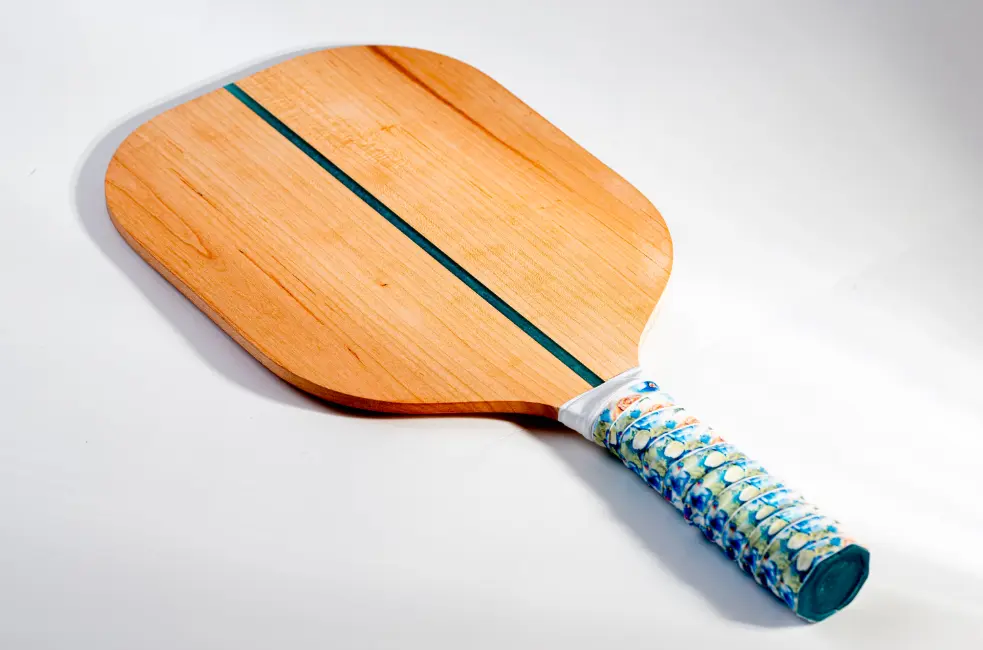
How Should You Grip a Pickleball Paddle?
Forehand Grip
For forehand shots, hold the paddle handle like you’re shaking hands with it. Place your fingers along the length of the handle, with your thumb resting comfortably on the other side. This grip allows you to generate power and control. Practice swinging through the ball using your whole arm and following through across your body.
Backhand Grip
On the backhand side, rotate your hand slightly clockwise so your knuckles are at about a 45-degree angle. Spread your fingers apart and place your index finger down the length of the handle. Your thumb should rest on the back side of the handle. This grip may feel awkward at first but gives you the most power and stability for backhand shots. Concentrate on using your wrist and forearm, not just your elbow.
Transitioning Between Grips
The key to mastering different pickleball paddle grips is practicing the transition between them. As the ball comes over the net, quickly shift your grip to prepare for a forehand or backhand stroke. Start with slower rallies so that you have time to focus on your grip and arm positioning. As your reflexes and muscle memory improve, the transitions turn into second nature.
The pickleball paddle grip is an essential skill which could take practice to master. Work with an instructor who can guide you on your technique and shape. Start with the basic grips, then study dink and slam variations as your skills advance. Consistent practice will give you the confidence and reflexes to change grips seamlessly all through fast-paced net play. Before you know it, you’ll be dropping shots just over the net and slamming winners down the line!
How to Hold a Pickleball Paddle at the Net
To effectively play the net in pickleball, you need to master gripping your paddle for quick reaction shots. The net is where the action happens fast, so you have to be ready to pop the ball over with a dink, drop shot or block your opponent’s attempted pass.
Continental Grip
The most common grip at the net is the continental grip, where you place your index finger along the back of the paddle face and your thumb on the other side of the handle. This versatile grip allows you to maneuver the paddle face in any direction. Use this grip for dinks, drop shots, blocks and quick wrist flicks.
Eastern Backhand Grip
If you prefer extra power and spin on your backhand, try the eastern backhand grip. Slide your hand down so your index finger and thumb are on opposite sides of the handle, closer to the paddle face. This grip adds stability and is ideal for aggressive backhand returns and spins. However, it may feel awkward when switching quickly to a forehand shot. Practice transitioning between the continental and eastern backhand grips.
Paddle Face Position
With either grip, keep your paddle face slightly open, not perfectly perpendicular to the net. This allows you to direct the ball with more precision. Aim to make solid contact in the center or upper half of the paddle face for the most control. Keep your elbow up and wrist steady, generating power from your core and shoulder rotation.
The key to dominating the net is finding a grip and paddle position that maximizes your reflexes and shot-making abilities. Experiment with different grips during practice to determine what feels most natural for your playing style. With consistent practice at the net, these techniques will become second nature.
Do You Change Grip for Backhand in Pickleball?
When at the net in pickleball, you’ll need to modify your grip for backhand shots. The Continental grip, where you hold the paddle in a handshake position, is good for forehand shots that require short response times and solid touch with the ball. However, for backhands, this grip can feel awkward and limit your range of movement.
Switch to the Eastern Backhand Grip
For backhand shots at the net, switch to an Eastern backhand grip.This means putting your index finger alongside the back of the paddle handle, with your knuckles facing forward. Your thumb should rest comfortably on the side of the handle. This grip gives you extra wrist flexibility and strength for backhand shots.
Practice the Transition
The key is practicing transitioning smoothly between the Continental forehand grip and Eastern backhand grip as needed during play at the net. Start with the Continental grip as your default, but as soon as you see your opponent hit the ball to your backhand side, quickly shift your grip while keeping your eye on the ball. The more you practice, the faster your grip transition will become second nature.
Keep Your Wrist Firm
When using the Eastern backhand grip, it’s important to keep your wrist in a neutral aligned position, not bent back. Bending your wrist back reduces control and power. Keep your wrist firm and straight, and generate power from rotating your torso and upper body, not your wrist. This, combined with the correct grip, will give you solid, accurate backhand shots that your opponents struggle to return.
With practice, changing grips for forehand and backhand shots at the net in pickleball can turn out to be seamless. Focus on gripping the paddle correctly for each shot, smoothly transitioning between grips, and maintaining proper technique. Your net play will improve extremely as a result.

How to Choose the Right Pickleball Paddle Grip
The grip of your paddle is one of the most vital but ignored elements of your game. At the net, how you keep the paddle can make or break your ability to return strong hits and low impact shots. There are some options for pickleball paddle grips that offer special benefits depending on your playing fashion and hand size.
The most common grip is the classic grip, wherein you place your index finger along the back of the handle and wrap your remaining fingers around. This allows for quick wrist action and mobility. However, for players with larger arms, the conventional grip may feel cramped. In that case, you could try the hammer grip, keeping the paddle like a hammer together with your hands wrapped over the top of the handle.This gives more power but less control.
For extra power and reach at the net, some players prefer the Eastern forehand grip. Place your palm on one side of the handle, with your fingers going across the other side. Your knuckles should be in line with the edge of the paddle face. This grip takes some practice to master but provides excellent leverage for slamming the ball past your opponent.
If you struggle with dropping soft shots over the net, try the finger grip. Extend your index and middle fingers along the back of the handle and pinch the paddle between your thumb and ring/pinky fingers. This grip gives the most wrist flexibility and touch, ideal for drinking and dropping the ball just over the net. However, it does reduce power, so use it selectively.
In the end, the best pickleball paddle grip for you relies upon your playing style, hand length, and choices. Experiment with different grips during your games to find what feels comfortable and enables you to play your best game at the net. With practice, switching among grips can become second nature and give you an edge over your opponents.
Conclusion
In conclusion,whether you are a beginner or a pro player, getting to know the right pickleball paddle grip on the net is essential for success. With the right grip and positioning, you will have better control, extra energy, and improved accuracy to put those balls away. It takes practice and conscious attempt, however be patient with yourself.
Remember to relax your wrists and modify your grips as necessary. The more games you play focusing on your grip, the extra natural it turns into over the years. Eventually holding the paddle simply right might be second nature. But for now, hold these tips in mind next time you head out on the court. Apply them consistently and you will be crushing those net shots very quickly! Now get out there, have fun, and happy gripping!
FAQS
How should I position my hands on the paddle grip?
Position your dominant hand at the top with the index finger parallel to the paddle face, and your non-dominant hand at the bottom for quick reactions.
How tightly should I grip the paddle?
Hold the paddle firmly without gripping too tightly to maintain control and wrist flexibility.
What is the difference between a forehand and backhand grip?
For forehand shots, rotate your dominant wrist with the index finger pointing towards the paddle face; for backhand, use an Eastern grip with knuckles facing the paddle face.

